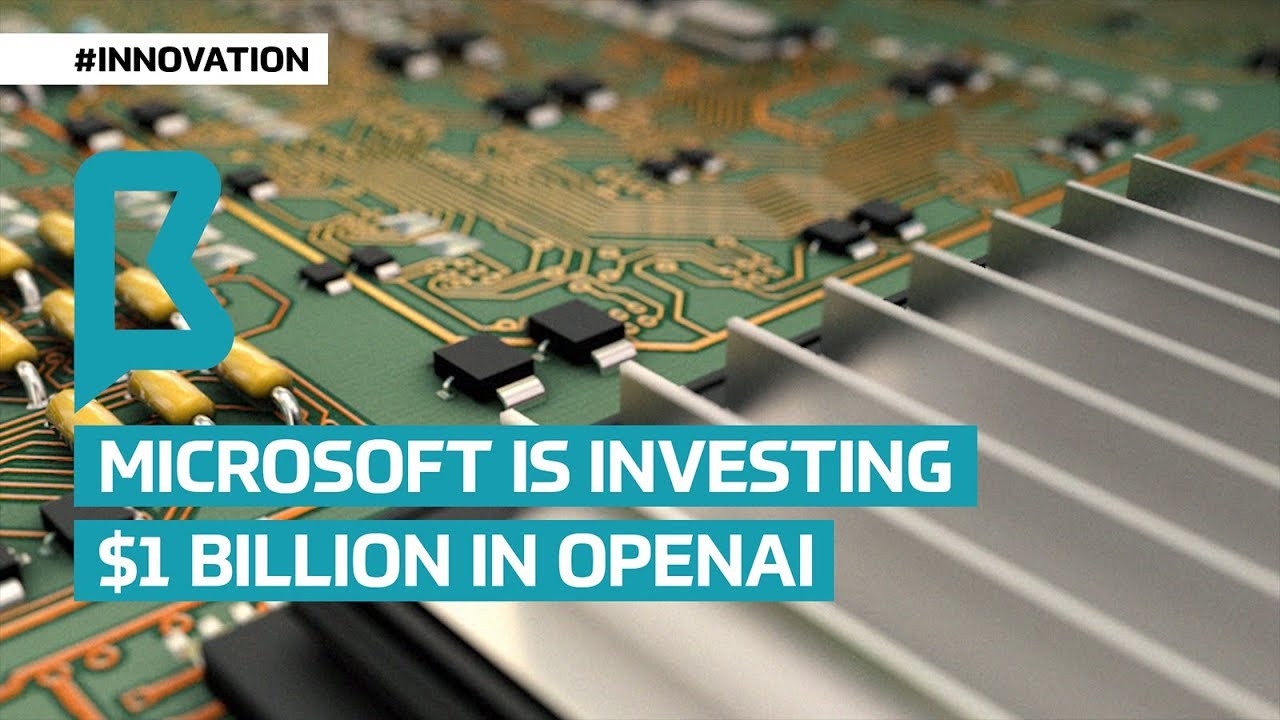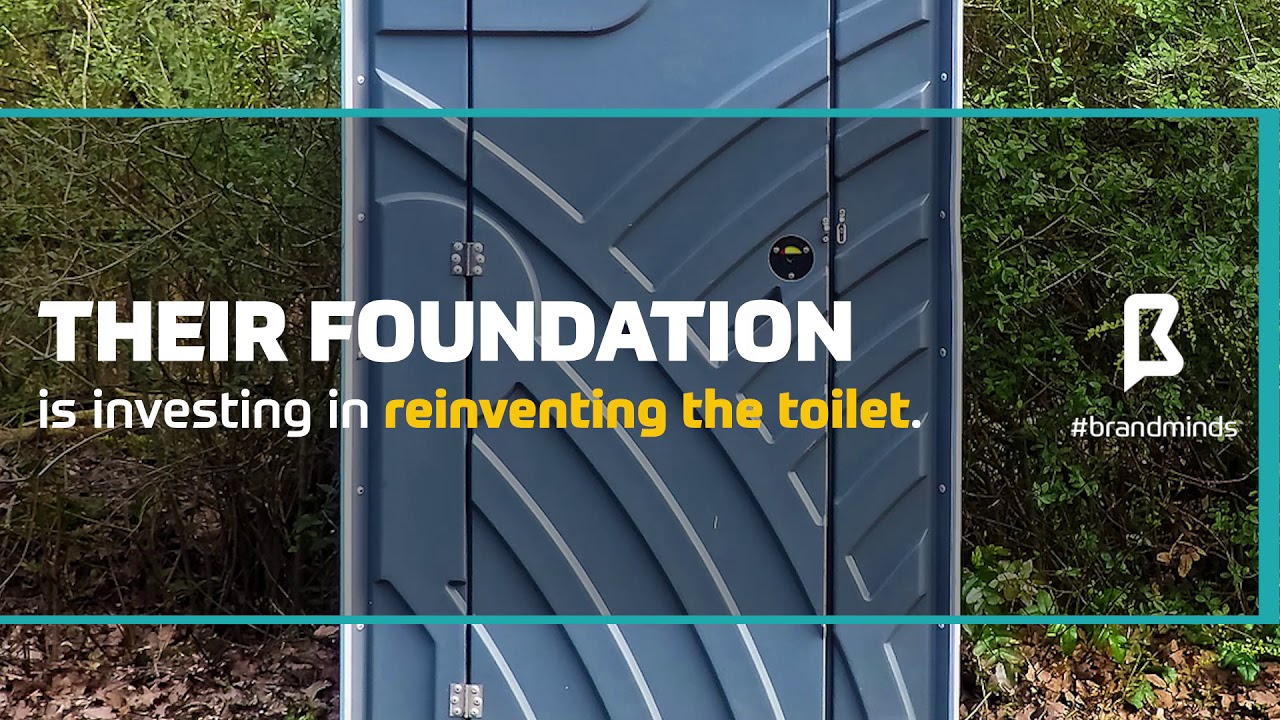7 unique ways to generate ideas for marketing purposes
Marketers are creative professionals by definition. You are always looking for ways to generate ideas for marketing purposes may they be blog articles, campaigns, a website redesign or customer polls & quizzes.
A marketer’s mind is like a speed car racing at 100 miles per hour. You need to stay updated with the latest content produced by your competitors but you also need to find your own way.
From marketing managers to followers on social media, everyone expects original ideas – surprising, never-before-seen, unique.
But where are you going to find new ideas?
Not on Google. If it’s on Google, it’s already been done.
And as we’ve already discussed, the best content is the one that stokes curiosity and exceeds your followers’ expectations.
Here are 7 unique ways that help me be more creative and generate ideas for marketing purposes:
1. Watch performance art
Performance art is one of the most innovative and surprising expressions of art. It challenges your understanding of the world and makes you question things you take for granted. Performance art is basically the embodiment of the artist’s ideas.
If you are interested in performance art, you can start with the following artists: Olafur Eliasson, Yayoi Kusama, Studio Drift and Banksy.
Olafur Eliasson is a visual artist known for sculptures and large-scale installation art. He makes use of elemental materials such as light, water, and air temperature to create immersive environments and enhance the viewer’s experience.
His most-celebrated large-scale installation is The weather project.
Yayoi Kusama is a renowned contemporary artist famously known for her signature polka dots art, hence the name – The Queen of Polka Dots.
One of her signature installations is Infinity Mirrors, which offers visitors the chance to step into an illusion of infinite space.
Studio Drift is an artist collective that explores the boundaries of technology, art and nature. DRIFT manifests the phenomena and hidden properties of nature with the use of technology.
2. Talk to people outside your regular circle of friends and acquaintances
They say we are the average of the five people we spend the most time with.
Our close friends and acquaintances have definitely a strong influence on us, our choices and our outlook on life.
It’s always good to meet new people even if they don’t become friends.
By surrounding yourself with people older or younger, working jobs in industries different than yours, you have the chance to come into contact with different life experiences.
Don’t pass on the opportunity to know how other people live, what their experience is like, know their challenges and aspirations, learn what they do in their free time or how they spend their money.
Even better if they match the profile of your customers. They will provide you with a unique insight and in-depth understanding that could lead to new ideas for great marketing campaigns.
3. Visit new cities
Cities are repositories of the culture of the people living in them.
Building architecture marks the most important events in their history.
Observe how people spend their time in the city, how they connect with each other through the city.
Notice how people do business, what their habits are, speak to locals and open a window into their lives.
It could help you get inspired and generate new ideas.
4. Follow content creators on Instagram
Content creators on social media are a boundless resource for creativity.
From illustrators to UX designers, photographers to painters – Instagram is, in my opinion, the go-to place when you need to get inspired.
Whenever I want to get refresh my ideas, I check these two Instagram accounts: daisieapp and cart0lina.
Daisie is a social app based on creative collaboration launched by Game of Thrones star Maisie Williams.
It’s a hub that welcomes creatives in almost every field: musicians, artists, designers, illustrators, film photographers, poets and content creators.
View this post on Instagram
Cart0lina is where graphic designer Carolina Fragapane displays her amazing skills. Her ability to create visually impactful and seemingly never-ending content is astonishing.
View this post on Instagram
5. Learn about a different industry
Just like talking to people outside your close circle of friends is beneficial, learning about a different industry has the potential to generate unique ideas.
How is that industry using technology?
What tools do people in that industry use to talk to their audience or customers?
How is that market different from yours?
What do marketing professionals in that industry do best? What could they improve?
What could you use from their experience to improve your work?
Do your best to answer these questions and you could extract a wealth of information and valuable insight to help you generate new ideas.
6. Run polls and quizzes
One of the best ways to generate unique ideas for marketing purposes is to run polls and quizzes.
Conducting polls is a great way to engage with your audience and learn more about them: their goals, their buying habits, their opinions on the hottest topic of the day.
Optimize your polls to get the most answers possible. Follow up with a piece of content (blog article, infographic, video etc) that highlights the results and provides further information or solutions depending on the poll results.
Your audience will appreciate it!
7. Browse old ads of famous brands
If I were to choose one book to take with me in the event of a disaster, it would be The Copy Book – How some of the best advertising writers in the world write their advertising by Taschen.
The Copy Book features a collection of some of the smartest ads created by 48 leading copywriters in the world.
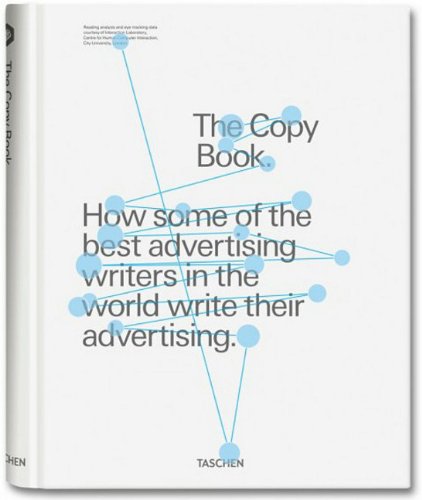
The ads included here go back as far as the 70s and feature creative work from famous brands such as Apple, The Economist, BMW, Microsoft, Nike a.s.o.
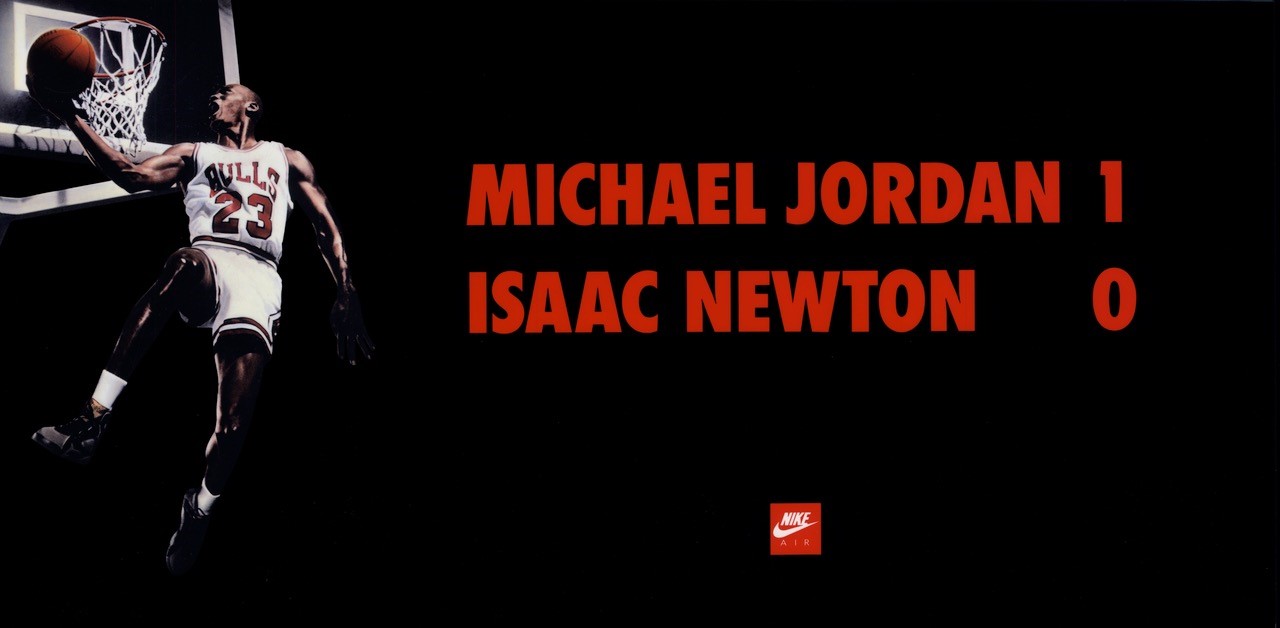
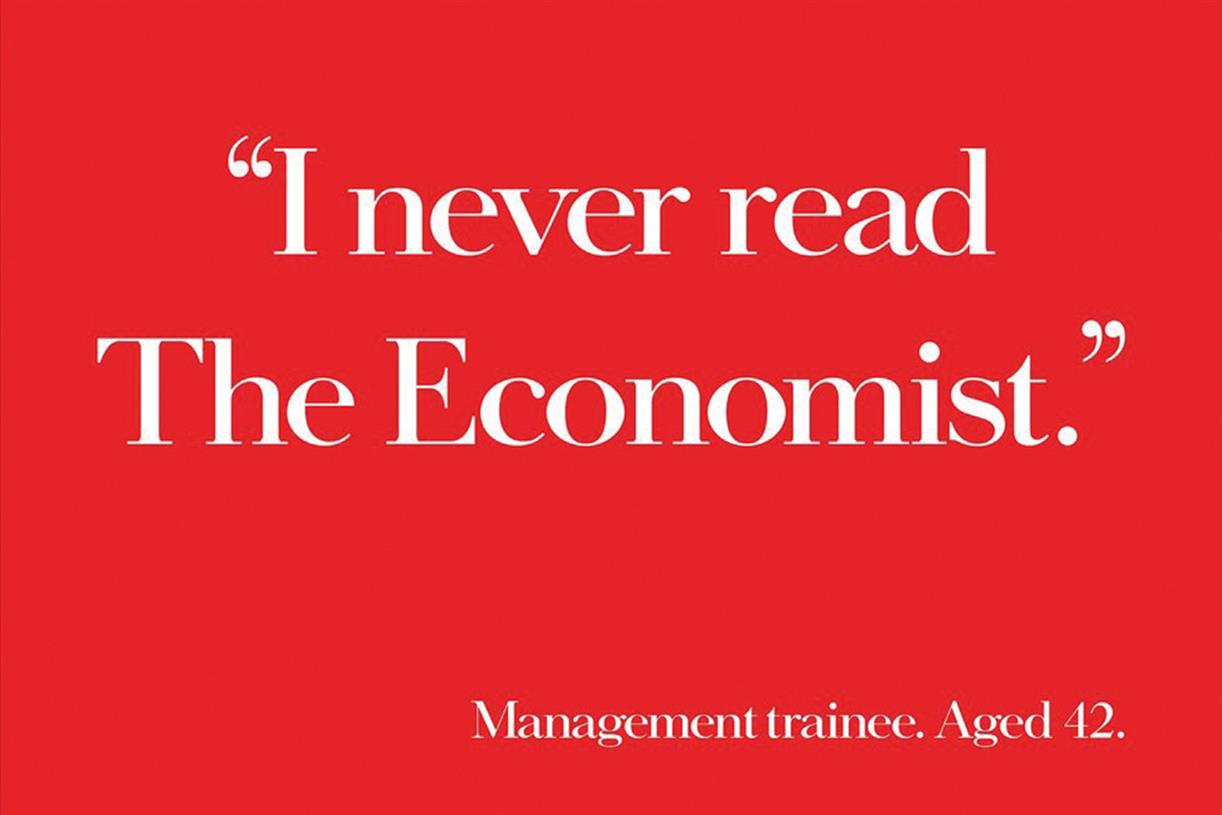
Conclusion
How is a floating block helping me generate ideas for marketing purposes, you might ask?
It’s not about the floating block, or the miniature sun – it’s about the concept behind them. Both concepts use technology to awe people, to deliver a unique experience.
That’s what you need to take from these examples: discover the underlying principles and find out how you could use them to power a new campaign or a redesign of the website or a landing page.
Join the Conversation
We’d love to hear what you have to say.
Get in touch with us on our LinkedIn Page, Facebook Page, Twitter or TikTok.
Blockchain Business News 22-28 March
This is the weekly wrap of Blockchain Business News for 22-28 March. Subscribe to get the blockchain news you need for your business!
Germany creates bridge between blockchain and euro

German authorities have developed technology allowing investors to buy and sell securities on the blockchain in return for central bank money, bridging a gap between two worlds that once seemed irreconcilable.
The Bundesbank, which partnered with Deutsche Börse and the German government’s debt agency for this project, said on Wednesday its solution was the first allowing those who sell securities on the blockchain to receive their proceeds on their account at the central bank.
The technology could be scaled up to the entire euro zone shortly and well before the European Central Bank’s digital euro is launched, it said.
“The participants have demonstrated that it is possible to establish a technological bridge between blockchain technology and conventional payment systems to settle securities in central bank money with no need to create central bank digital currency,” the Bundesbank said.
Israeli Blockchain Startup StarkWare Raises $75 Million Series B
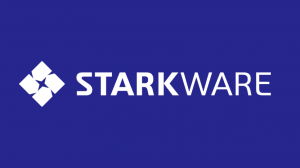
StarkWare creates scaling solutions for blockchains. The company’s core technology is called STARK.
Through its technology, StarkWare aims to solve the inherent problems of permission less blockchain, namely scalability and privacy.
Last week, the Israeli startup announced that it has raised a $75 million Series B round.
“Our technology can multiply blockchain scalability by 1,000 times. Thanks to our technology, we are becoming the engine behind many of the transactions taking place on blockchains and the main engine behind NFTs,” explained co-founder and CEO Uri Kolodny.
StarkWare recently announced the launch of StarkEx 2.0, the first system in production to be programmed in Cairo, the company’s new Turing-complete, programming language for generating STARK proofs.
If you’re looking to invest, Israeli-based tech startups such as StarkWare should be among your top choices. In a previous article on the top tech hubs of the world, Israel was in top 5 with the technology sector growing faster than any other industry in the country.
Microsoft breakthrough: the launch of ION, its decentralized identity protocol for managing web account access
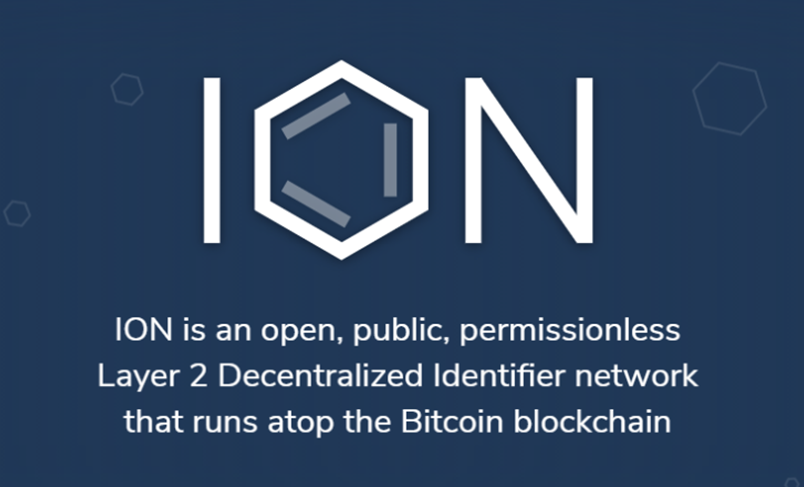
ION is the end result of four years worth of work that Microsoft has put in to develop and advance decentralized identity.
Decentralized identity is an emerging form of identity technology that empowers individuals and creates new business capabilities.
“Our goal is to put individuals, organizations, and other entities at the center of the apps, services, and digital exchanges that increasingly play a pivotal role in our lives”, said Daniel Buchner, Decentralized Identity, Microsoft in the company’s announcement blog.
In order to deliver decentralized identity, the most important are Decentralized Identifiers (DIDs).
What are DIDs?
DIDs are identifiers that can be used to secure access to resources, sign and verify credentials, and facilitate application data exchange.
Unlike traditional usernames and email addresses, DIDs are owned and controlled by the entity itself (be it a person, device, or company), and exist independently of any external organization or trusted intermediary.
What is ION?
ION stands for Identity Overlay Network and is a set of open standards which runs atop the Bitcoin blockchain.
ION is a public, permission-less, open network anyone can use to create DIDs and manage their Public Key Infrastructure (PKI) state.
Blockchain.com valuation jumped from $3 billion to $5.2 billion in just 30 days
Blockchain.com, one of the world’s largest cryptocurrency wallet providers, has recently announced that it’s raised $300 million in a mega fundraising round that values the company at $5.2 billion.
Blockchain.com now has over 31 million verified clients in over 200 countries, tripling its user base in the past 12 months.
The company will spend the fresh cash on expanding its products, ramping up hiring globally and pursuing mergers and acquisitions.

Blockchain.com CEO & co-founder Peter Smith
“With one of the most significant balance sheets in the industry, we plan to aggressively expand the products we offer our customers, grow our global team, and pursue M&A opportunities to bring exciting new products and ideas into the company”, said Blockchain.com CEO Peter Smith.
Join the Conversation
We’d love to hear what you have to say.
Get in touch with us on our LinkedIn Page, Facebook Page, Twitter or TikTok.
McKinsey 7S model of Nokia – where the company went wrong
From a cell phone pioneer to being acquired by Microsoft in 2013, Nokia is a case study of organizational failure. Let’s analyze where the company went wrong by applying McKinsey 7S model.
McKinsey 7S model is a business framework which can be used to analyze organizational effectiveness. According to the McKinsey model, the organization is a complex ecosystem consisting of seven interconnected factors: Structure, Strategy, Skills, Staff, Systems, Style and Shared Values.
The model is also a blueprint for organizational change.
To show you how you can use the McKinsey model 7S for the benefit of your organization, I will analyze mobile pioneer Nokia at the time of its demise, namely 2011-2013.
Here’s a brief background story:
In October 1998, Nokia became the best-selling mobile phone brand in the world with an operating profit of almost $4 billion. The best-selling mobile phone of all time, the Nokia 1100, was created in 2003. Five years later, Apple introduced the iPhone. By the end of 2007, half of all smartphones sold in the world were Nokias, while Apple’s iPhone had a mere 5% share of the global market.
In 2010, attempting to drive Apple out of the market, Nokia launched the “iPhone killer”. The model failed to achieve its goal and was the beginning of the end for Nokia. From that moment on, Nokia embarked on a downward spiral of low-quality phones. In just six years, the market value of Nokia declined by about 90%. The organization was acquired by Microsoft in 2013.
Now that you’re familiar with Nokia’s failure story, let’s analyze the organization before Microsoft made its move to acquire it by applying the McKinsey 7S model.
In my opinion, here are the factors that required immediate change: Structure, Style, Skills, Staff and Strategy.
McKinsey 7S model of Nokia
McKinsey 7S model of Nokia – Structure
Nokia of the era was a top-down line structure organization.
In public speeches given by the organization’s top executives, agility and being nimble were mentioned as key competitive advantages.
But it was all talk. The organization’s top management was living in a bubble, disconnected from the company’s technology development departments. Communication was one-way and teams were not empowered to contribute to the organization’s strategy.
To adapt to the new technological environment and compete with Apple, a powerful tech company, Nokia should have taken steps to change its structure from top-down hierarchical to decentralized and agile.

Instead of organizing employees in silos, with no communication and collaboration between them, the company should have placed its employees in teams, with every team working to achieve a common goal.
Team members should have been empowered to speak up, come up with solutions and work independently.
McKinsey 7S Model of Nokia – Style
In McKinsey’s model style refers to culture. What was Nokia’s culture at that time?
As per the 2015 paper Distributed Attention and Shared Emotions in the Innovation Process: How Nokia Lost the Smartphone Battle, Nokia suffered from organizational fear, status (We are no 1), in-house politics and temporal myopia.
Top managers had business backgrounds and lacked technological competence. Employee morale was low.
As the saying goes, culture eats strategy for breakfast. Top management should have adopted a transformational leadership style where the leader’s goal is to transform the organization so that it’s constantly improving.
Transformational leaders create a vision of the future that they share with their teams so that everyone can work together toward a shared goal and vision. Technology is ever-changing. Technology companies must embrace change in order to stand the test of time.
Transformational leadership would have been the best fit for Nokia because it fosters creativity and innovation through collaboration. This type of culture builds and maintains employee motivation and satisfaction and is effective in facilitating organizational change.
McKinsey 7S Model of Nokia – Skills
Nokia didn’t lack talent and didn’t have a skills gap in the company. There were no gaps in know-how or competence.
At its peak, Nokia had one of the top highly-skilled tech workforces in the world.
The company’s hardware and software engineers had designed one of the most successful and iconic cell phones in the world, there’s no doubt about it.
The problem was the top management. Between 2007 and 2010, the position of the Chief Technology Officer (CTO) disappeared from the top management team. Technical managers had left the company and new hires had no technical skills making it difficult for them to understand the technological challenges and the direction in which the company should be heading.
Conversely, top management members at Apple were all engineers. Nokia should have focused on increasing tech skills among C-level executives.
McKinsey 7S Model of Nokia – Staff
At Nokia, people were talking business instead of technology which is quite surprising for a software company.
The organization should have found ways to motivate and nurture its employees appropriately.
McKinsey 7S Model of Nokia – Strategy
Struggling to compete with Apple and adapt to the technological developments that were disrupting the business environment at that time, Nokia top management had to choose between three strategies: optimizing costs and volume, maximizing performance, or maximizing security.
They decided to go with cost optimization which made it impossible to achieve performance in software.
With Apple going for technological innovations and excellency, needless to say, they made the wrong decision.
Conclusion
At its peak, Nokia manufactured 40% of the world’s mobiles. The company had the human resources (skills and staff factors) required to keep innovating and increasing its market share.
Unfortunately, the company’s leadership (style factor) lacked core competences and vision necessary to drive change within the company.
They didn’t allow the tech talent in the company to contribute with valuable insights to important decisions. The company chose the wrong strategy which ultimately lead to its demise.
Join the Conversation
We’d love to hear what you have to say.
Get in touch with us on our LinkedIn Page, Facebook Page, Twitter or TikTok.
What is the McKinsey 7S framework for successful management
What is the McKinsey 7S model explained briefly?
The McKinsey 7S model is a business framework to address the essential role of coordination, rather than structure, in organizational effectiveness.
This business framework states that the organization is not the structure and is a model of organizational change.
Whenever organizations need to adapt to new business environments the hierarchy of the organization (who is tasked with what, who reports to whom, who needs approval from whom etc) is irrelevant.
The organization goes beyond its structure. It’s a complex ecosystem comprised of seven factors which interact with each other and influence an organization’s ability to change.
What are the 7S of McKinsey’s framework?
The seven factors of the McKinsey 7S framework are STYLE, SKILLS, SYSTEMS, STRUCTURE, STAFF, STRATEGY and SHARED VALUES.
For an organization to change successfully, it needs to approach every S factor.
The framework shows that every factor interacts with the other six. The organization cannot make significant progress towards change by focusing on one area and ignoring the rest. The organization must tackle its approach to change by moving into all seven S factors.
Let’s explain every S factor of the McKinsey model.
McKinsey 7S framework – Style
By style, the authors of the McKinsey 7S framework mean culture.
What is organizational culture and why is it essential to an organization’s success?
The culture of a company or organization is a set of shared beliefs, values and practices. The organization’s CEO, founder or top management are responsible for outlining the organization’s culture and hiring the right people that will maintain it.
For many organizations, culture drives success.
Neflix’s No rules policy is at the heart of its culture. The famous entertainment company nurtures employee freedom and encourages responsibility.
At UiPath, the efforts of top management are focused on providing employees with psychological safety beyond anything else.
At Amazon, employees are encouraged to think like an owner.
In every one of these organizations, success is synonymous with innovation and culture is the medium that facilitates innovation.
McKinsey 7S framework – Skills
Skills refers to organizational skills as well as individual skills.
What does your organization do best? What is your organization known for? What are its strengths? Is it creativity and design? Is it distribution or sales?
BMW is known for its innovative engineering and fast engines.
Coca-Cola has one of the most successful distribution systems in the world.
Louis Vuitton is renowned worldwide for its high-quality luxury handmade handbags.
The skills factor is also important to reveal skills gaps in the organization. With the business environment being disrupted by new technologies, organizations face increasing needs to fill skills gaps. They can either hire highly-specialized talent or upskill their current employees.
Another question that organizations must aks is do we need to improve hard skills or soft skills?
It’s an important question because the needs of an organization may shift every few years to follow changes taking place in our society. Read about the top 5 most in-demand soft skills in 2021.
Marketing is an industry where learning never stops. The professional growth and career advancement of a marketer now hinge on his or her desire and ability to learn new things. Read 4 skills that every successful marketer should acquire in 2021.
McKinsey 7S framework – Systems
By systems, the McKinsey framework means all the procedures, formal and informal, that make the organization go day by day.
How does the organization get things done?
Here are some of the main systems that an organization operates to achieve its goals:
- IT
- Financial
- Hiring
- Customer service
- Product development and delivery
- Information management
- Internal communication
- Planning
- Employee evaluation
There is a significant difference between how organizations were doing customer service in the 1980s and how it’s done today.
Organizations nowadays have a slew of digital tools they can use to solve the customer’s requests efficiently – Chatbots, Whatsapp, social channels etc.
McKinsey 7S framework – Structure
The structure factor of the McKinsey 7S framework refers to the way the organization is structured.
Is it centralized, decentralized or a hybrid?
Historically, the first organizations were centralized with one man, ie the founder or the CEO, taking every decision.
Apple under Steve Jobs is an example of a centralized organization where the founder made decisions regarding design, functionality, features etc.
The centralized organization can be very effective and ensures that the founder’s vision is carried out throughout the company and reflected in the product. But when the organization scales up, this type of organizational structure reveals its flaws. The organization is slow to make decisions and adapt to changing circumstances.
Starting with the 1950s, decentralization became the focus of organizations which had achieved a certain level of size and complexity.
Within these organizations, the number of employees had increased and subsequently the number of interactions required to make things work. The size and complexity of these organizations had become a burden and they were in danger of breaking down.
Decentralization was the solution. A decentralized organization is able to make decisions fast and adapt swiftly to its environment.
Other organizational structures are the line structure, the functional structure, the line-and-staff structure, the project-based structure, the matrix structure etc.
McKinsey 7S framework – Staff
Staff refers to the people in the organization and looks into the ways the organization nurtures and develops its employees.
How does the organization motivate its employees? What strategy does the organization employ to hire for diversity? Once diversity achieved, does the organization have an inclusion strategy?
Workforce diversity is a competitive advantage. A team which includes members of different generations, background cultures, interests and talents provides the organization with different insights and perspectives and drives creativity.
McKinsey 7S framework – Strategy
Strategy is defined as the actions a company plans to take to achieve its business objectives.
The plan outlines what (resources), how (specific tools, activities, platforms etc) and why (the reasons behind your choice of a specific resource or tool) the company will use to achieve its goals.
The strategy’s secondary goal is to define how the organization differentiates itself from the competition and create unique value. Learn how to create a strategic plan in 5 steps.
A successful organization must be able to change its strategy to match the current business environment. When organizations fail to see the need to change, they miss out on the opportunity to adapt and survive.
Nokia’s culture of status, shared fear and temporal myopia made the company vulnerable to competitive forces and prevented it to adapt its strategy (more on this in Why did Nokia fail?).
Microsoft, on the other hand, learned from Nokia’s mistakes (Microsoft acquired Nokia in 2014). When Satya Nadella became CEO, his main leadership challenge was to change the company’s culture. In his opinion, “The C in CEO stands for Culture”.
McKinsey 7S framework – Shared values
What is the organization trying to achieve? What is the organization’s social mission? How does the organization respond to the question Why?
In 2009, best-selling author Simon Sinek defined the concept of Why as the purpose, cause or belief that drives every one of us, leaders and employees alike.
Google’s mission is to organize the world’s information and make it universally accessible and useful.
TikTok’s mission is to inspire creativity and bring joy.
BRAND MINDS’ mission is to unite the business world by providing world-changers with the ultimate business experience.
Having a clear mission statement and delivering on it is paramount for a company’s reputation and bottom line. Consumers and employees expect organizations to stand for something. When they fail to deliver, organizations are met with protests and call-outs. For some organizations, change is now coming from employees putting pressure on the management, not the other way around.
Join the Conversation
We’d love to hear what you have to say.
Get in touch with us on our LinkedIn Page, Facebook Page, Twitter or TikTok.
Top 7 biggest tech acquisitions of 2020
(UPDATED) What are the top 7 biggest tech acquisitions of 2020?
1. Oracle to take a 12.5% stake in TikTok Global
TikTok became available in the American market in 2018 after merging with another social media service Musical.ly.
Within two years, TikTok US has increased its monthly user base to 100 million, up 800%.
According to SensorTower, TikTok was the most downloaded app in 2020 with 82 million downloads globally.
Was TikTok’s global surge in downloads a result of Donald Trump’s threat to ban the US operation of the Chinese social app? Most likely.
Was the pandemic lockdown a contributing factor? Definitely yes.
In September 2020, Oracle announced that it was chosen to become TikTok’s secure cloud technology provider.
The company’s press release also reports that the decision was heavily influenced by Zoom moving a large portion of its video conferencing capacity to the Oracle Public Cloud.
According to Oracle Chief Technology Officer Larry Ellison, the cloud infrastructure is “much faster, more reliable, and more secure than the first generation technology currently offered by all the other major cloud providers”.
As part of the agreement, Oracle will become a minority investor in TikTok Global with a 12.5% stake in the company. How much is that worth? Well, it was estimated that ByteDance, TikTok’s parent company is valued at $100 billion and that TikTok’s US operations account for about 40% of ByteDance’s valuation, or about $40 billion. This means that Oracle’s stake is worth $5 billion.
However, the agreement is yet to be finalized with the American government granting TikTok an extension of its forced sale deadline until December 4, 2020.
2. Salesforce to acquire Slack for $27.7 billion
Salesforce is the top CRM providers worldwide empowering companies of every size and industry to digitally transform and create a 360° view of their customers. It is one of the fastest-growing enterprise software companies of all time with over 150,000 customers ranging from small businesses to FORTUNE 500 companies.
In 2019, Salesforce increased its market share to 18% followed at a distance by its competitors SAP, Oracle, Microsoft and Adobe.
In December 2020, Salesforce announced that the CRM provider has entered into a definitive agreement with Slack under which it will acquire the latter for $27.7 billion. Slack is one of the most innovative enterprise communications platforms. You can learn more about its growth story here.
This is a match made in heaven. Together, Salesforce and Slack will shape the future of enterprise software and transform the way everyone works in the all-digital, work-from-anywhere world. I’m thrilled to welcome Slack to the Salesforce Ohana once the transaction closes.
Marc Benioff, Salesforce CEO
3. Microsoft to acquire games developer ZeniMax Media for $7.5 billion in cash
Two years ago, Microsoft acquired seven games developer studios.
Today the market has grown to 3 billion gamers from 1 billion in 2018 and is expected to bring more than $200 billion in annual revenue in 2021. The gaming industry is one of the fastest-growing industries worldwide registering a CAGR of 9.17% over the forecast period (2020 – 2025).
With the acquisition of ZeniMax Media, the parent company of Bethesda Softworks, one of the largest, privately-held game developers and publishers in the world, Microsoft consolidates its foothold in the gaming industry. Under the terms of the agreement, Microsoft will acquire ZeniMax Media for $7.5 billion in cash.
ZeniMax Media are the creators of critically acclaimed and best-selling gaming franchises including The Elder Scrolls and Fallout among many others.
With unique investments in content, community, and the cloud, Microsoft’s gaming strategy differs from others by empowering people to play the games they want, with the people they want, anywhere they want. Games are the primary growth engine in gaming, and games are fueling new cloud-gaming services like Xbox Game Pass, which has reached a new milestone of over 15 million subscribers. With the addition of Bethesda, Microsoft will grow from 15 to 23 creative studio teams and will be adding Bethesda’s iconic franchises to Xbox Game Pass.
Microsoft Press Release
4. Adobe acquires work management platform for marketers Workfront for $1.5 billion
In November 2020, Adobe announced it has entered into a definitive agreement to bring Workfront, the leading work management platform for marketers, to Adobe Experience Cloud for $1.5 billion.
Founded thirty-eight years ago, Adobe continues to deliver award-winning software and technologies that have redefined and advanced business and personal communications.
Adobe Illustrator® and Adobe Photoshop® are groundbreaking software used by more than 90% of creative professionals worldwide for digital image editing and creation.
Adobe Experience Cloud is the most comprehensive solution for content and commerce, customer journey management, and customer data and insights, all built on an open platform, enabling businesses of every size across every industry to deliver exceptional customer experiences at scale.
With the acquisition of Workfront, Adobe makes the digital transformation easier for its customers.
Workfront has more than 3,000 customers and 1 million users and deep leadership in orchestrating marketing workflows. Workfront’s platform is agile and uniquely architected for the enterprise, with extensive integration capabilities that can be easily configured to meet the varied needs of companies of all sizes.
Together, Adobe and Workfront will provide our customers access to a single system to support planning, collaboration and governance that will unlock organizational productivity. Now marketers will not only create and deliver the best customer experiences but also efficiently and seamlessly manage the workflows that bring these experiences to life.
Adobe press release
5. Amazon to acquire self-driving tech startup Zoox for an estimated $1.2 billion
With a market capitalization of $1.7 trillion, Amazon is the third most valuable tech company in the world following Microsoft and Apple.
In June 2020, Amazon has signed an agreement to acquire Zoox, a self-driving tech startup designing autonomous technology from the ground up with passengers front-of-mind.
Amazon’s support will get the startup closer to its mission of delivering safe, clean, and enjoyable transportation to the world. Founded in 2014, Zoox’s tightly integrated features are designed to provide a revolutionary passenger experience. The startup has raised $955 million in venture-backed funding.
Amazon hasn’t disclosed the purchasing value of the agreement but industry experts estimate it is a little over $1.2 billion.
What are Amazon’s plans for Zoox?
Some experts say the company will more likely integrate Zoox’s technology into its distribution network than building a fleet of autonomous driving cars. This might happen in the near future.
For now, Zoox is sticking with its mission and is preparing to unveil its ride-hailing vehicle on December 14 under the tagline The future is for riders, not drivers.
6. Facebook to acquire customer-focused platform Kustomer for a reported $1 billion
In November 2020, Facebook announced that it reached an agreement to acquire Kustomer, a top-rated CRM that enables businesses to effectively manage all customer interactions across channels.
The goal of the platform with over 2.7 billion monthly active users is “to give businesses access to best-in-class tools that deliver excellent service and support.”
Facebook reports that more than 175 million people contact businesses via WhatsApp every day. Kustomer helps businesses optimize their time and quality of interactions with customers by bringing customer conversations from various channels together into a single-screen view.
Facebook plans to support Kustomer’s operations by providing the resources it needs to scale its business, improve and innovate its product offering, and delight its customers. That way, more people will benefit from customer service that is faster, richer and available whenever and however they need it, whether it’s phone, email, web chat or messaging.
Facebook press release
7. Cisco to acquire audience interaction company Slido for an undisclosed amount
In December 2020, Cisco announced its intent to acquire privately-held Slido, a technology company that provides a best-in-class audience interaction platform.
Cisco’s acquisition is a strategical business decision which allows the company to stay competitive with Zoom. Webex, Cisco’s video conferencing solution had 600 million participants in October 2020.
Slido developed a Q&A and polling platform designed to bridge the gap between speakers and their audiences. The company’s platform provides for its 7 million participants monthly a web-based application to actively engage people and get real-time feedback before, during, and after events and meetings.
With Slido’s technology, Cisco will integrate even more insights into the Webex platform to help everyone work smarter and be more productive whenever and wherever work happens. We are going to enable companies around the world that have traditionally relied on in-person events like townhalls, all-hands meetings and major user conferences to make sure everyone is engaged and included.
Cisco press release
Microsoft is investing $1 billion in OpenAI
Microsoft announced a $1 billion investment in startup OpenAI.
Find out more in the video!
Learn more: Bill and Melinda Gates’ Annual Letter
Join the Conversation
We’d love to hear what you have to say.
Get in touch with us on Facebook Group and Twitter.
3 Friendships That Changed The World
Today we celebrate the International Day of Friendship. To honour this day, here are 3 friendships that changed the world.
3 Friendships That Changed The World
Sergey Brin and Larry Page – co-founders of Google

Larry Page and Sergey Brin / google.com
The story of Google starts in 1995 when Sergey Brin and Larry Page met at Stanford University. Larry was considering Stanford for grad school and Sergey was already a student there, assigned to show him around.
The first meeting was not all sugar and spice and everything nice. They didn’t see eye to eye most of the time, but having a common goal allowed them to struck a partnership a year later.
They began building a search engine that used links to determine the importance of individual pages on the web which they called Backrub. Their naming skills may have lacked inspiration, but they knew what their mission was:
Basically, our goal is to organize the world’s information and to make it universally accessible and useful.
Larry Page
Although they were working out of their dorm rooms, their work attracted the attention of self-made billionaire and co-founder of Sun Microsystems, Andy Bechtolsheim who gave the dynamic duo a check for $100,000. This lead to the official birth of Google Inc in 1998. Receiving investment funds allowed Larry and Page to move their work into a garage, now famous, in Menlo Park, California. The garage was owned by Susan Wojcicki (employee #16 and now CEO of YouTube).
If what we are doing is not seen by some people as science fiction, it’s probably not transformative enough.
Sergey Brin
Today Google has more than 60,000 employees in 50 different countries and makes hundreds of products used by billions of people across the globe. As of July 2019, Google’s net worth is $864.49B, followed by Facebook ($570.184B) and China-based Tencent ($450.071B).
Google is a giant corporation and in 20 years since its founding, it had many ups and downs. Read about some of them in the article I wrote on the occasion of Google turning 20 in 2018.
Do you want to know where is Google heading?
Read this article: The Biggest Tech Acquisitions of 2018: Apple, Amazon, Google, Microsoft.
Bill Gates and Paul Allen – co-founders of Microsoft

Bill Gates and Paul Allen / geekwire.com
Bill Gates wrote his first software program at 13 and graduated from school as a National Merit Scholar. He enrolled in Harvard College where he devised an algorithm for pancake sorting as a solution to one of a series of unsolved problems presented by one of his professors. Gates’ solution held the record as the fastest version for over thirty years; its successor is faster by only one per cent. In 1974 Bill dropped out of school and joined Paul Allen who was working at Honeywell.
Success is a lousy teacher. It seduces smart people into thinking they can’t lose.
Bill Gates
Two-years Bill’s senior, Paul Allen shared his passion for computers. After graduating from Lakeside School which Bill also attended, Paul went to Washington State University but dropped two years later to work as a programmer for Honeywell. He convinced Bill to drop out of Harvard and start their own computer company – Microsoft. Paul came with the name which is short for microcomputer software.
In 1975, childhood friends Bill Gates and Paul Allen founded Microsoft, a technology company which in the mid-80s rose to dominate the personal computer operating system market with MS-DOS.
As long as we work together, with both urgency and determination, there are no limits to what we can achieve.
Paul Allen
Today Microsoft has subsidiaries in 120 countries all over the world and over 144,000 employees. Since its founding 44 years ago, Microsoft has grown and developed in various directions like gaming, conversational AI, machine learning and bot development to name just a few. The company is also developing #techforgood.
As of April 2019, Microsoft is the third company to hit the $1 trillion market valuation, following giants Amazon and Apple.
Kevin Systrom and Mike Krieger – co-founders of Instagram

Kevin Systrom and Mike Krieger / instagram.com
Kevin Systrom was introduced to computer programming in high school. He graduated from Stanford University with a bachelor’s degree in management science and engineering. While a student at Stanford, Kevin met Mike Krieger, a fellow Stanford student who was studying symbolic systems.
If you’ve got an idea, start today. There’s no better time than now to get going. That doesn’t mean quit your job and jump into your idea 100% from day one, but there’s always small progress that can be made to start the movement.
Kevin Systrom
Kevin worked at Google for two years on various products (Gmail, spreadsheets etc) before starting a new app called Burbn, which combined location check-ins and popular social games. He also came up with a photo filter to hide the inferior quality of photos taken by an iPhone4 camera. Together with Mike, he began working on Burbn, the prototype for Instagram.
Hearing ‘no’ a lot of times usually tells you either you’re crazy or you’re on the right track, and you don’t know which one it is until you finally launch.
Mike Krieger
Kevin and Mike launched Instagram in 2010 and a month later the app had 1 million users and a year later, 10 million users. Facebook acquired Instagram in 2012 for $1 billion.
Read more: The Story of Instagram and WhatsApp Founders Leaving Their Facebook Acquired Companies
Join the Conversation
We’d love to hear what you have to say.
Get in touch with us on Facebook and Twitter.
These 3 companies are developing #techforgood
Modern life comes with many changes and most of them are driven by technology. Some of these changes are good, some of them are bad. We blame technology while putting aside the human factor and the awareness that technology is just a tool.
Here are 3 companies developing #techforgood:
1. Google – Grow with Google
The latest research on digital skills done by the European Commission shows there’s a digital skills gap which affects 44% of Europeans between 16 and 74 years – that’s 169 million people. In the future, 9 out of 10 jobs will require digital skills. Google set out to support people acquire and develop their digital skills by launching Grow with Google in 2015.
Grow with Google is a free programme with the purpose of helping people find jobs, advance their career or grow their businesses.
Grow with Google management’s goal was to teach one million Europeans within a year. The programme did so well that it exceeded all hopes and dreams management had starting out.
Four years later, here are some statistics:
- 10 million people trained: 5 million in Europe and 5 million people across Africa and the Middle East;
more than 80 countries around the world; - In Europe, 315,000+ people have found a job or started a new business, 86,000+ people have grown their career and 730,000+ businesses reported growth in revenue and customers;
- Women accounted for 48% of the people trained;
- ⅓ of the trainees were unemployed;
- 90% of business trainees came from small businesses.
The programme offers free online training courses for personal growth and for business development where trainees learn how to use Google Ads, improve their advertising skills, self-promote, grow their business etc.
The programme caters to the needs of people looking to improve their digital skills, startup founders, business owners, teachers, YouTube creators, Android developers, non-profits and cultural organizations.
2. Facebook – CodeFWD
In September 2018, Facebook announced the launch of CodeFWD, a free online education program to inspire underrepresented and female students to pursue computer programming.
CodeFWD by Facebook is a three-step program where educators and organizations introduce computer programming to 4th through 8th-grade students.
The program helps educators introduce the basics of computer programming to their students and supports students to practice their new skills.
The program is created in partnership with Sphero Edu, an education hub which nurtures creative play while building robots.
3. Microsoft – Child Growth Monitor
According to UNICEF, nearly half of all deaths occurring in children under 5 are caused by under-nutrition – a loss of roughly 3 million lives a year.
Jochen Moninger, innovation director at Welthungerhilfe, a nonprofit based in Bonn spent 12 years working in African countries like Yemen and Sudan and knows first-hand what child hunger looks like. He says the solution to end malnutrition is to accurately measure it one child at a time. To this end, his organization developed Child Growth Monitor.
Child Growth Monitor is a cloud-based, smartphone app that can scan children and instantly detect malnutrition.
The app uses an infrared sensor available in some smartphones to capture 3D measurements of a child’s height, body volume and weight ratio, as well as head and upper arm circumferences down to the millimetre.
Nutritionists and IT specialists then evaluate the scans by using Microsoft artificial intelligence solutions, pinpointing a child’s dietary health.
The experts later pump that data back into the app, training the algorithm to get smarter with each measurement.
Join the Conversation
We’d love to hear what you have to say.
Get in touch with us on Facebook Group and Twitter.
Bill and Melinda Gates’ Annual Letter
Bill and Melinda Gates published their annual letter for 2019.
The Gateses listed their 9 biggest surprises of 2018 and dedicated the letter to Bill Gates’ Microsoft co-founder Paul Allen, who died last year.
Check out the video:
Join the Conversation
We’d love to hear what you have to say.
Get in touch with us on Facebook Group and Twitter.
How Slack Grew To 8 Million Subscribers In 5 Years
As of 2018, Slack has grown to 8 million subscribers in just five years.
Despite its huge success, this collaboration tool for teams has humble beginnings. In fact, it was a by-product called Tiny Speck that Stewart Butterfield’s team had built when they were working to develop an online game. The game didn’t fly; Slack is the Phoenix that rose from its ashes.
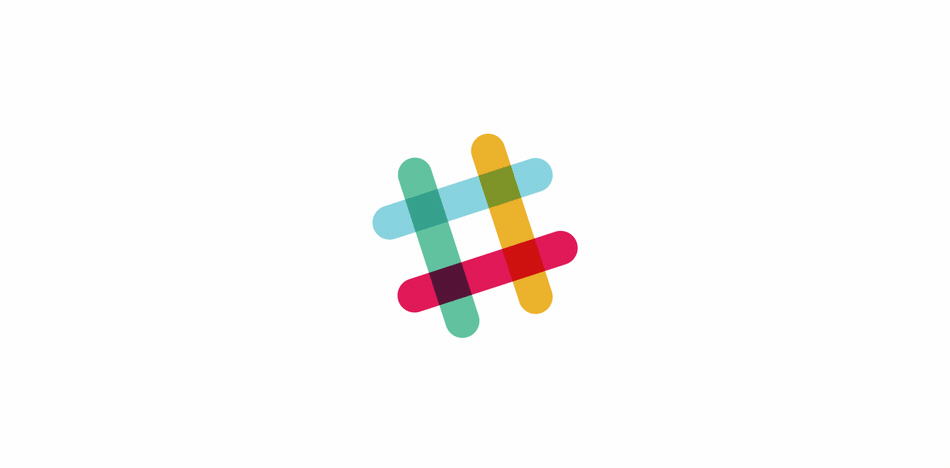
Slack’s 2019 rebranded logo
This article gives you insight into how Slack managed to become an 8 million subscriber app in such a short timeframe.
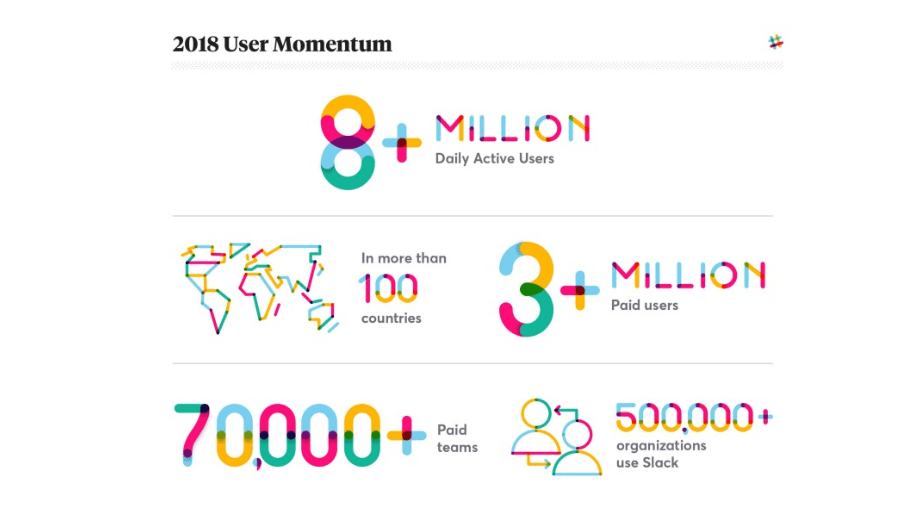
slackhq.com
Slack is an enterprise messaging tool which is aimed at assisting team members to chat, work on projects together, and share links and more in real time.
Read our previous Growth Stories: Spotify, Canva.
Slack was developed using the following 6 growth strategies:
1. Word-of-mouth marketing
Stewart Butterfield (CEO and co-founder) and his team began working on Slack in 2012.
Before their preview release in August 2013, Stewart and his team had begun asking friends and acquaintances working at other companies to give Slack a go and see what they make of it.
This helped the team discover how the product fitted the market and catered to customers’ needs. It also helped them work on core features and basic functionality.
The word-of-mouth approach worked brilliantly because on the release day 8,000 people signed-up to Slack. Two weeks later, that number had grown to 15,000. By February 2015, when the tool was publicly available, Slack had acquired 500,000 daily active users. Within four months, this number had doubled to 1.1 million active users.
Today Slack has 8 million daily active users with 3 million paid users and counting. If you are an SEO enthusiast, here is another benefit which will make you feel warm inside: 100.000.000 organic traffic/month of which 90% is driven by word-of-mouth.
Our mission at Slack is simple: to make people’s working lives simpler, more pleasant, and more productive. The experience our users have working in Slack is core to our culture and to our business success.
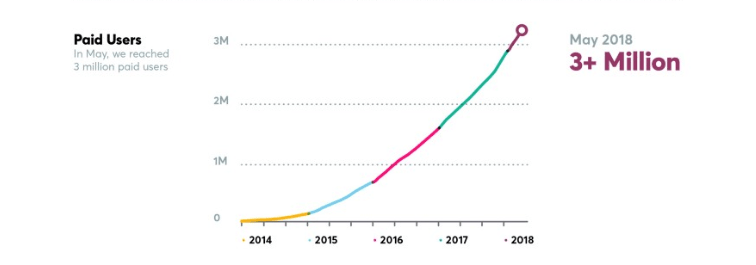
slackhq.com
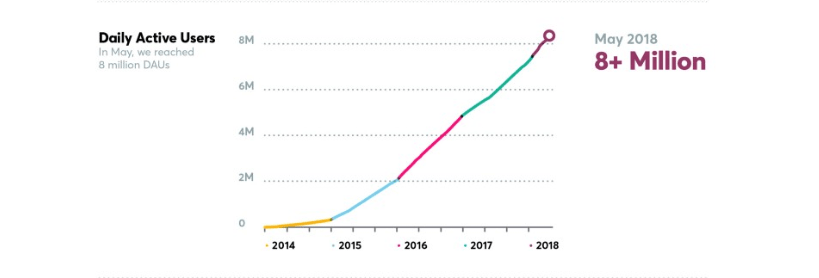
slackhq.com
2. Integration with other providers
We’re selling a reduction in information overload, relief from stress, and a new ability to extract the enormous value of hitherto useless corporate archives. We’re selling better organizations, better teams. That’s a good thing for people to buy and it is a much better thing for us to sell in the long run. We will be successful to the extent that we create better teams.
Stewart Butterfield, CEO and founder
Slack is not just a messaging app, it’s a collaboration hub that brings the right people together with the right conversations, information, and tools they use at work. And to be productive and efficient, teams need to make the most of their time. So integrating with other tools that teams use on a regular basis was paramount to Slack’s success.
There are more than 1500 apps in the Slack App Directory. Slack’s website attracts 100.000.000 visitors/month.
Chris von Wilpert has analyzed how the integrations are contributing to Slack’s website organic traffic. Here are his conclusions:
- Slack ranks on the first-page search results whenever anyone searches a product with which Slack integrates;
- Slack managed to achieve this by creating an individual landing page for each of its integrations;
- The integrations bring in high-quality referral traffic.
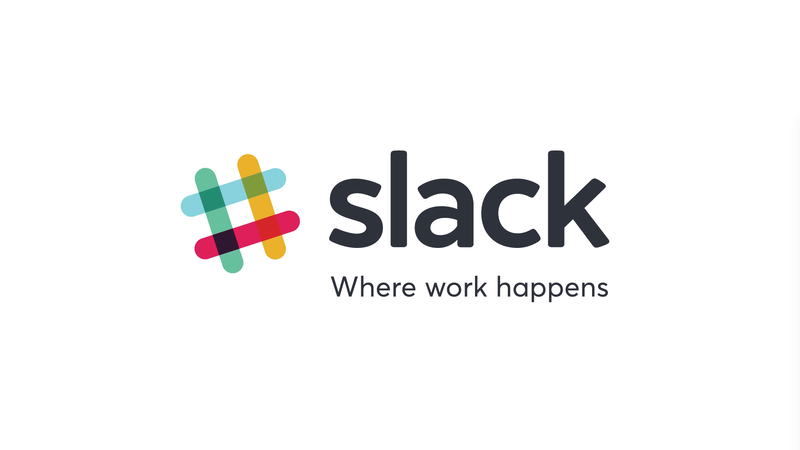
3. Content marketing
Content marketing didn’t become part of Slack’s growth strategy until 2014.
Unlike other companies, the team growing Slack made an interesting and bold choice: to host their company blog outside slack.com.
Slack’s blog is called SlackHQ.com and it was first a publication on Medium.com, the online blogging platform. It was bold and risky at the same time, and it worked out great for Slack. The content published here took full advantage of Medium’s features and was often featured on Medium’s homepage in the ‘Popular On Medium’ section.
The blog managed to acquire over 125.000 followers, but in 2018 it was moved to slack.com.
4. Twitter
We bet heavily on Twitter. Even if someone is incredibly enthusiastic about a product, literal word-of-mouth will only get to a handful of people – but if someone tweets about us, it can be seen by hundreds, even thousands.
Stewart Butterfield, CEO and founder
Twitter is Slack’s most important social media platform.
Here is how Slack used the 180-character (now 240) social media network:
- Build brand awareness;
- Define its tone of voice;
- Keep their users up-to-date on changes, improvements, company life;
- Get customer feedback;
- Communicate with customers;
- Prevent the Slack support team from scaling up massively: Slack’s customer support team is made up of just 18 people, with a group of 6 manning Twitter 24/7.
Slack’s Twitter account has 374K followers, but it is most known for being home for the Slack Wall of Love where Slack subscribers come to express their love under @SlackLoveTweets.
Read Stewart Butterfield’s success story.
5. Dear Microsoft
On November 2016, Microsoft announced it was launching their own competing product.
Slack took this opportunity to gain media attention by publishing a letter addressed to Microsoft as a full-page ad in the New York Times.
Here is the letter’s first paragraph:
Dear Microsoft,
Wow. Big news! Congratulations on today’s announcements. We’re genuinely excited to have some competition.
We realized a few years ago that the value of switching to Slack was so obvious and the advantages so overwhelming that every business would be using Slack, or “something just like it,” within the decade. It’s validating to see you’ve come around to the same way of thinking. And even though — being honest here — it’s a little scary, we know it will bring a better future forward faster.
While the letter sets out to give Microsoft “some friendly advice”, it does so by highlighting the principles and values which Slack was built upon and taking a few jabs at Microsoft at the same time:
- It’s not about features, it’s about “a degree of thoughtfulness and craftsmanship that is not common in the development of enterprise software”;
- Thousands of hours talking to customers;
- Internal transparency and a sense of shared purpose;
- The necessity of working with an open platform and integrations: “We know that playing nice with others isn’t exactly your MO, but if you can’t offer people an open platform that brings everything together into one place and makes their lives dramatically simpler, it’s just not going to work.”
- And ultimately love: “We love our work, and when we say our mission is to make people’s working lives simpler, more pleasant, and more productive, we’re not simply mouthing the words.”
Here’s the final paragraph:
So welcome, Microsoft, to the revolution. We’re glad you’re going to be helping us define this new product category. We admire many of your achievements and know you’ll be a worthy competitor. We’re sure you’re going to come up with a couple of new ideas on your own too. And we’ll be right there, ready.
— Your friends at Slack
6. Fair Billing Policy
Like many other service apps and tools, Slack uses the freemium business model: free, standard and plus subscriptions.
Out of the thousands of hours of talking to early adopters and customers, the team behind Slack found one particular paint point and came up with a solution.
What is preventing the customer on free subscription from upgrading to a paid one?
One reason is that companies are charged for a number of seats regardless of how many employees are actively using the software. A second reason is that sometimes employees become inactive so the company loses money because it paid in advance.
To this problem, Slack found the following solution: Fair Billing Policy.
Here it is:
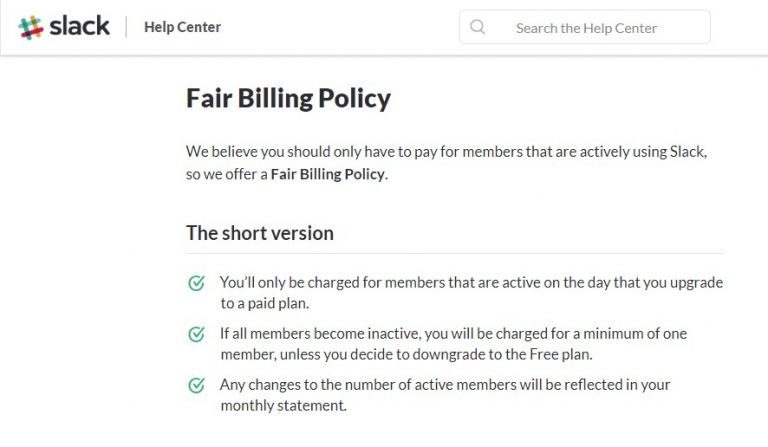
Big companies like Airbnb, IBM, Oracle, Target, BBC, Workday and E-Trade count among Slack’s customers with approximately 70,000 businesses paying for the company’s services.
According to finance experts, Slack is currently valued at $8.3B and it doesn’t look like it is slowing down.
Join the Conversation
We’d love to hear what you have to say.
Get in touch with us on Facebook Group and Twitter.
Biggest Tech Acquisitions of 2018: Apple, Amazon, Google, Microsoft
The future in technology is built by these top 4 tech giants: Apple, Amazon, Google and Microsoft. These companies take leaps by developing new products and maintaining a steady flow of innovations.
But when they wish to meet business goals which are time and resource consuming, they sometimes turn to acquisitions.
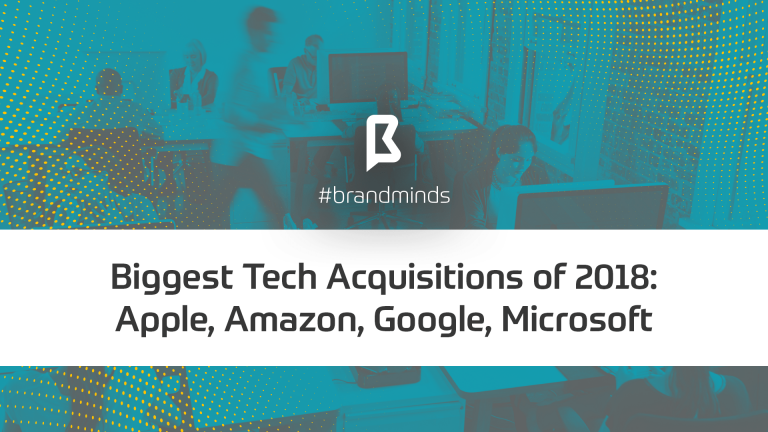
Here are the acquisitions made by these tech giants in 2018:
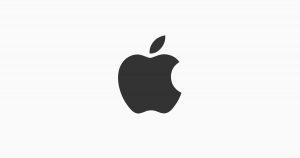
Apple current market valuation – $915b
Platoon is a talent-scouting and development startup that provides artist development as well as video, audio, and marketing services to singers and bands. Apple acquired Platoon in 2018 in a move to integrate even further with the music industry.
Another company that Apple acquired in 2018 is Silk Labs, a machine learning company using on-device AI to empower businesses to build the next generation of intelligent connected devices. This acquisition shows Apple’s desire to double down and speed up development of the next-generation AI-powered Apple products.
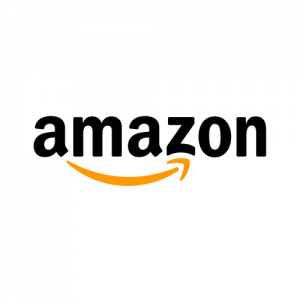
Amazon’s current market valuation – $828B.
In 2018, Amazon acquired Ring, an outdoor home security which provides homeowners with smart doorbells with cameras for $1B. Following this acquisition, Amazon sets a foothold on the smart-home market, extending its services at the same time.
PillPack is a full-service pharmacy that sorts medication by the dose and delivers it to your door. Sources said Walmart was in the process of acquiring PillPack when Amazon swooped in and sealed the deal for $1B. Is it a surprising move? Not to Amazon! The platform’s combination of pharmacy experience and technology focus is what attracted Amazon to close the deal. With this acquisition Amazon sets out to enter the healthcare industry.

Google’s current market valuation – $781B.
Education is one of Google’s areas of focus alongside economic opportunity, inclusion, crisis response and impact challenge. Google Classroom is Google’s tool to make teaching more productive, collaborative and meaningful. The acquisition of Workbench, a comprehensive platform for project-based learning supports Google Classroom to achieve its goals.
It is estimated that India operates around 14,000 trains on a daily basis across the country so the popularity of the Where is my train app is understandable. The app helps commuters track arrivals and departures as well as buying seats and it claims 10 million registered users. Google acquired Where is my train in 2018 after the big tech company reportedly beat Xiaomi, the Chinese smartphone maker to the deal. This acquisition shows Google’s interest in tapping the million user market in India.
DORA, short for DevOps Research and Assessment is a digital transformation research company which collaborated with Google Cloud in the past. The acquisition of DORA was a natural step for Google towards achieving its purpose of catering to the developer and the open community.
We are excited for DORA to join the Google Cloud family to help strengthen our data-driven approach to understanding what makes developers and operators productive and happy.
Melody Meckfessel, vice president of engineering for Google Cloud
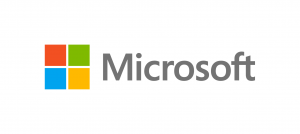
Microsoft’s current market valuation – $771B.
We’re mobilizing to pursue our extensive opportunity in a 100-plus-billion gaming market. This means broadening our approach to how we think about gaming end to end, about starting with games and how they’re creating and distributed, and how they’re played and viewed.
Satya Nadella
Beginning with 2017, the gaming industry became world’s favorite form of entertainment with $116B revenues, jumping ahead more traditional mediums such as TV, movies and music.
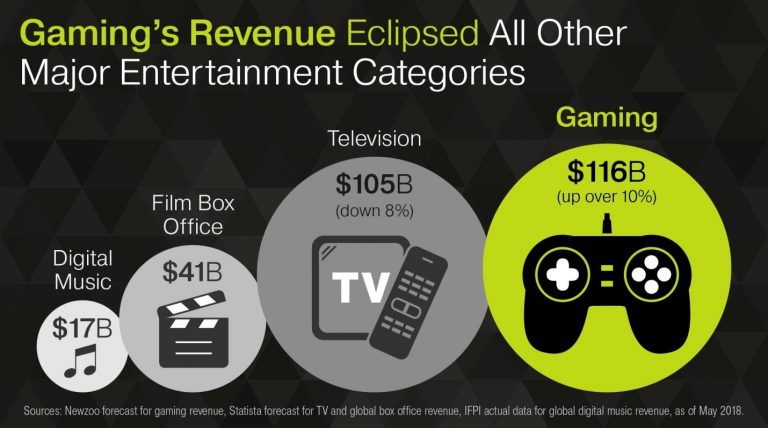
source: gamecrate.com
In 2018 Microsoft acquired a total of 15 companies, out of which seven were games developer studios: PlayFab, Compulsion Games, Undead Labs, Playground Games, Ninja Theory, inXile Entertainment and Obsidian Entertainment. We can definitely say that Microsoft’s interests are turning towards the gaming industry.
In a post published in January 2018 on the Microsoft blog, Kareem Choudhry – Corporate Vice President, Gaming Cloud expressed Microsoft’s goal of becoming the top player in the gaming industry:
Over 1 billion people play games, fueling a thriving industry whose ecosystem is evolving and growing quickly. Many industries are moving to the intelligent cloud, and this trend is true in gaming as well. This means an increasing number of developers are looking to create connected games for mobile, PC and console devices that have a significant emphasis on post-launch operations.
Given the acquisitions that followed throughout 2018, I’d say the giant tech company is on the right track.
Here are other directions Microsoft is developing through its latest acquisitions: conversational AI, video-based social learning, machine learning for autonomous systems and bot development.
Join the Conversation
We’d love to hear what you have to say.
Get in touch with us on Facebook and Twitter.
sources:
appleinsider.com/articles/18/12/07/apple-acquires-ar-startup-platoon-with-focus-on-new-emerging-artists
crn.com/news/cloud/google-cloud-buys-digital-transformation-devops-research-firm-dora
gamecrate.com/statistically-video-games-are-now-most-popular-and-profitable-form-entertainment/20087
techcrunch.com/2018/12/10/where-is-my-train-its-with-google-now/
techcrunch.com/2018/11/21/apple-silk-labs/
Outlook gets new features for the business users
Gmail and Outlook have been neck to neck in the last years in the fight for the business users. We wrote about it here and here.
Now, after Gmail announced its latest interface and the new changes, especially for the business users, Outlook decided is high time to react. Microsoft announced a number of new Outlook features across Windows, Mac, web, and mobile to help professionals be more productive on the platform. The features aim to help professionals better manage their time and prioritize tasks, according to a Microsoft blog post. They can also better connect users to the people, apps, and technology that power productivity, and protect businesses.
The main changes are as follows:
Bill pay reminders
Outlook will identify bills you receive in email, show you a summary at the top, and automatically add a calendar event on the due date. You will also receive an email reminder two days before the due date so you can always pay your bills on time.
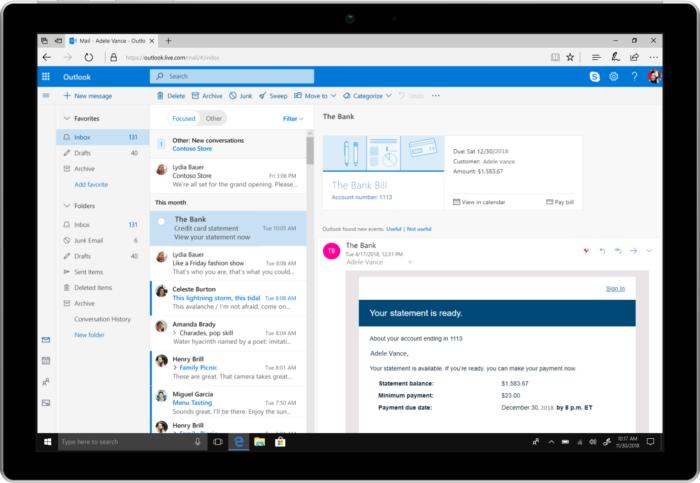
Suggested event locations and meeting rooms
When booking a meeting, Outlook will offer suggestions for the meeting location, including recently used and available conference rooms or other locations. For meetings outside the office, Outlook will add the full address, and use your current address and traffic information to send a notification when it is time to leave. This feature is only currently available in Outlook for Windows.
When creating a calendar event in Outlook for iOS, machine learning models will consider your location, the list of attendees, the proposed meeting time, and other elements to suggest a meeting location, which a user can then book with just a tap on their phone, according to the post.
Meeting RSVP tracking and forwarding
Keeping track of events you’ve organized or plan to attend is key to time management. But managing who is attending can be even more effective for everyone. Outlook now allows you to see the tracked responses and RSVPs for your meetings—
Outlook has also adjusted the tracking of RSVPs for meetings with large attendee lists or big meetings. If you use a distribution list to reach over 500 recipients, Outlook now tracks the responses for everyone individually. Now you can update the details for big meetings at any time if changes are required, outside the Office 365 email and calendar recipient maximum of 500.
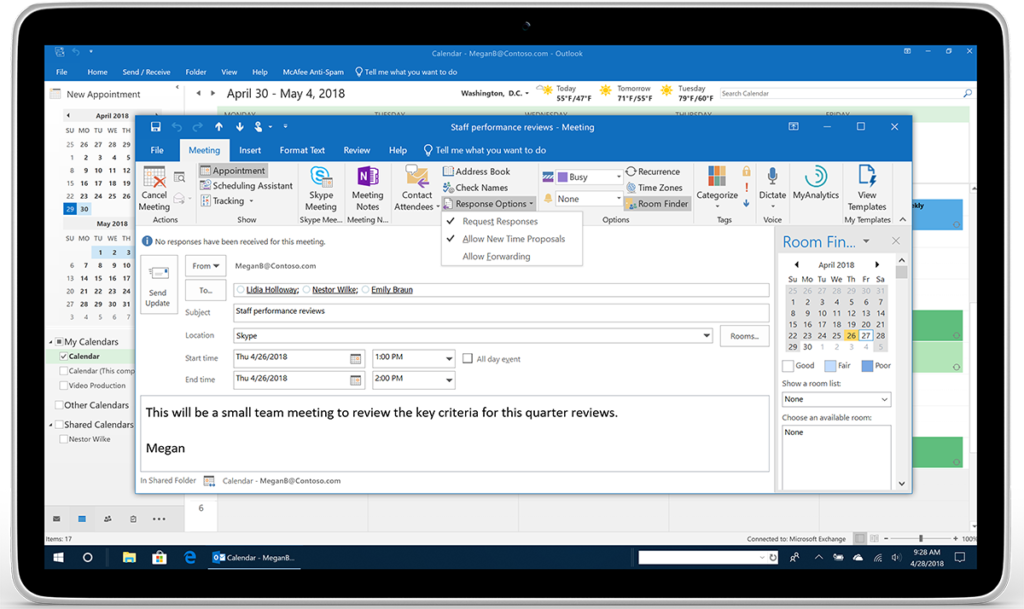
Multiple time zones
Outlook reduces the complexity of managing events across times zones. You can now define the start and end times of appointments and meetings across different time zones. Set up a travel event with your departure in one time zone and arrival time in the local time zone of your destination. Plus, on the main calendar grid, you can now show multiple time zones in Outlook. In Windows, you can add up to three time zones. In Mac, add one additional time zone.
Show organization directory details
Outlook now adds the details of your organization directory to your Outlook contact information. The new feature can be found under Show Organization, so you can quickly learn who’s who in your company. If your company data is connected to Azure Active Directory, you can see who your contact reports to, their chain of command in your company, and even other colleagues they work with most. Knowing more about who might help you take care of business is right there in Outlook. You can simply tap search in your Outlook mobile app once to quickly identify your key contact, open their contact card, and view their organizational information.
Proxy support
Some organizations have adopted the use of proxies to block direct access to the internet from mobile devices. Now Outlook supports companies that use SOCKS proxies for added protection between their company data and the internet.
Bcc warning
It may happen to be blind copied on an email message and you’d like to respond. Outlook protects you if you reply to that message by alerting you that you were blind copied—



